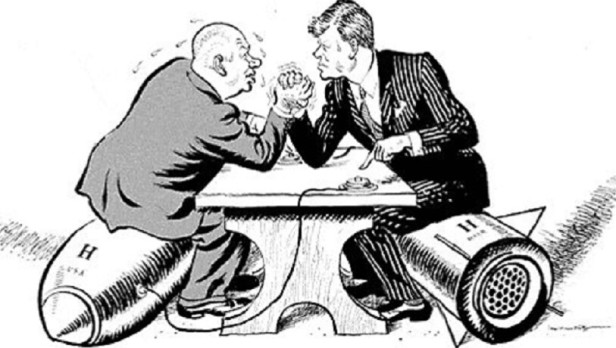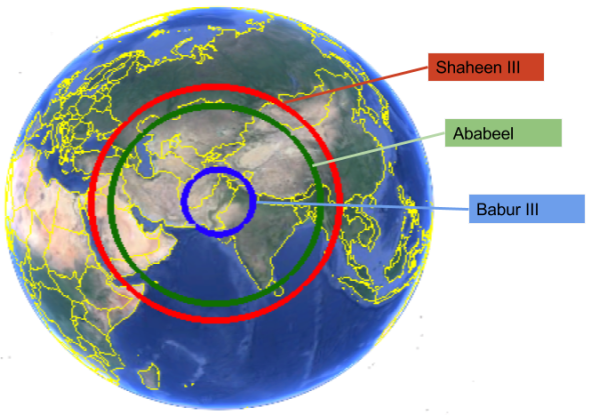Deterrence Theory
Deterrence Theory is a military base strategy which gained increased prominence after the WWII and during the Cold War. The theory based on nuclear weapons and second strike capability. It means that, if one side attack, the other side has a capability to launch nuclear weapons.
 The Deterrence works for a long time so we have not seen any nuclear war yet. But the theory triggered the nuclear arms race. Conflict between India and Pakistan is the most common example.
The Deterrence works for a long time so we have not seen any nuclear war yet. But the theory triggered the nuclear arms race. Conflict between India and Pakistan is the most common example.
In January, Pakistan executed two missile tests. And by the end of development, Pakistan will have 3 advanced ballistic and nuclear-capability missiles.
Babur-III
On 23rd January, Pakistan announced that it had successfully carried out the first-ever test of its nuclear-capable Babur-III submarine-launched cruise missile (SLCM) from a submerged platform. The test took place at an unspecified location in the Indian Ocean off the Pakistani coast.
Babur-III SLCM is ultimately designed for use with its Agosta 90B diesel-electric submarines, which have reportedly been modified to enable SLCM launches, but remain untested in this regard.
Critically, the Babur-III is capable of nuclear payload delivery. Once fully developed and tested on-board a submarine, Pakistan would possess a sea-based second strike capability. But, submarine-based nuclear forces are almost completely invulnerable against modern anti-submarine warfare techniques.
Ababeel
The Pakistan military has conducted the first successful flight test of a new medium range ballistic missile (MRBM) on 24th January. The test involved the successful launch of the MRBM Ababeel.
Ababeel is capable of carrying nuclear warheads and has the capability to engage multiple targets with high precision.
Pakistan has not released additional technical details surrounding the launch.
Shaheen-III
A third MRBM, the Shaheen-III, a multi-stage fueled ballistic missile with an estimated range of 2,750 kilometers (1,700 miles) is currently still under development.
It is possible that the Ababeel is a more robust and redesigned variant of the Shaheen-III fitted with an improved terminal guidance system, among other modifications. Indeed, in order to accommodate a Multiple Independently-targetable Reentry Vehicle (MIRV) warhead, the Shaheen-III would in all likelihood have undergone a complete redesign.
Islamabad will need to further invest in and develop intelligence, surveillance, and reconnaissance (ISR) capabilities including satellite technology to operationalize ballistic missiles capable of carrying multiple warheads and field a credible MIRV capability. China’s Beidou satellite navigation system adaptation is an option for Pakistan.

Anyway, the test of ballistic missiles which have nuclear capability, is a clear sign that the nuclear arms race between India and Pakistan is escalating.

